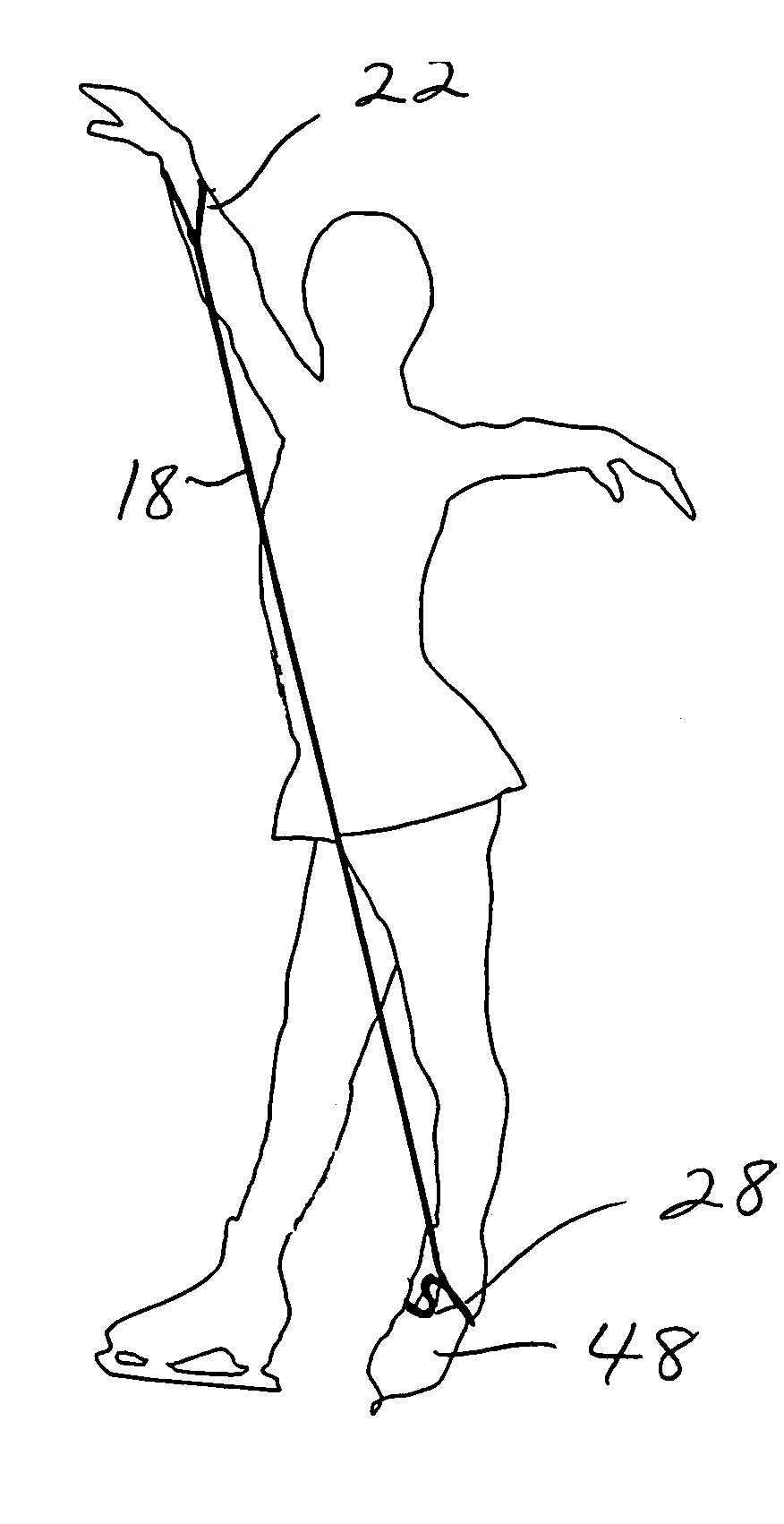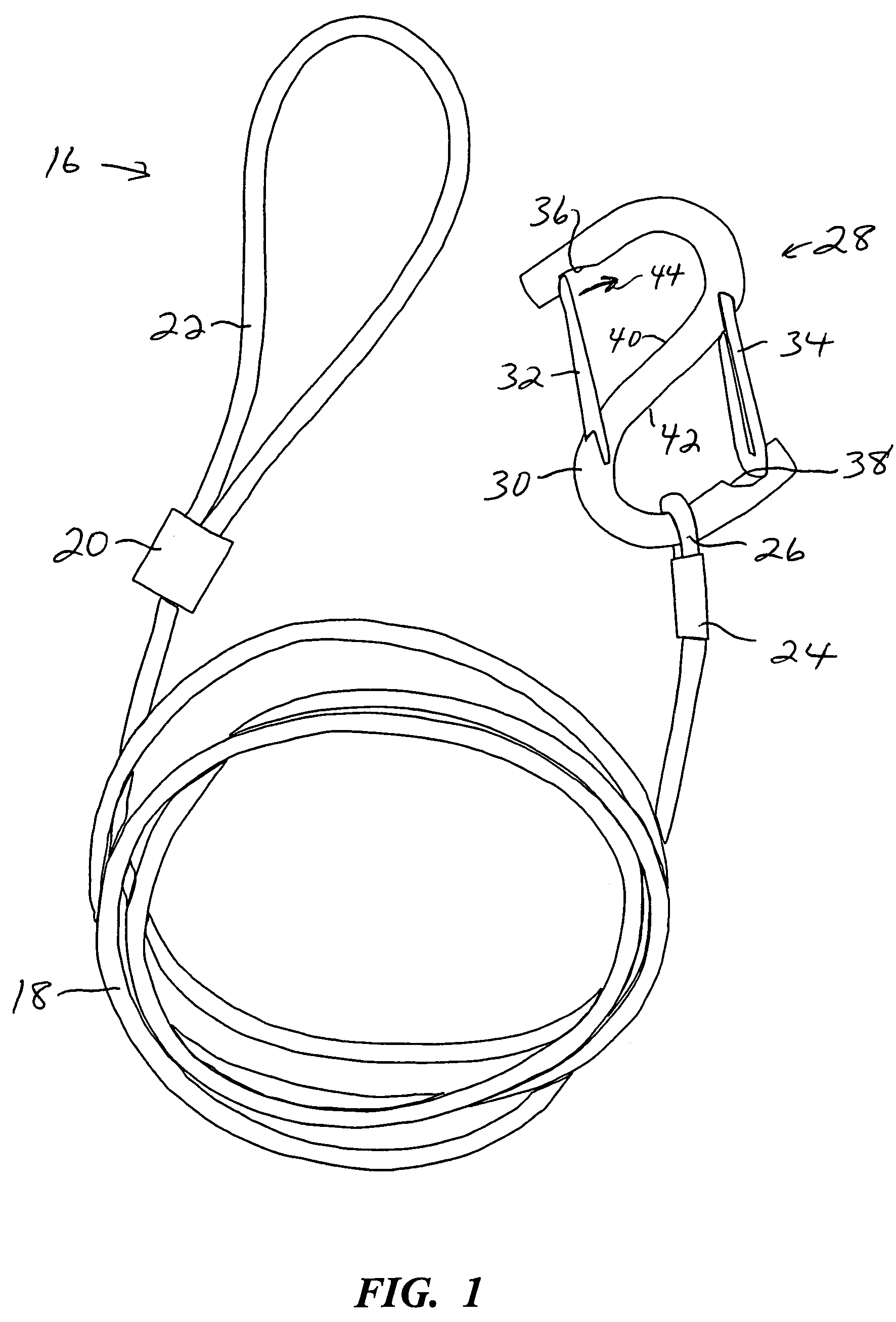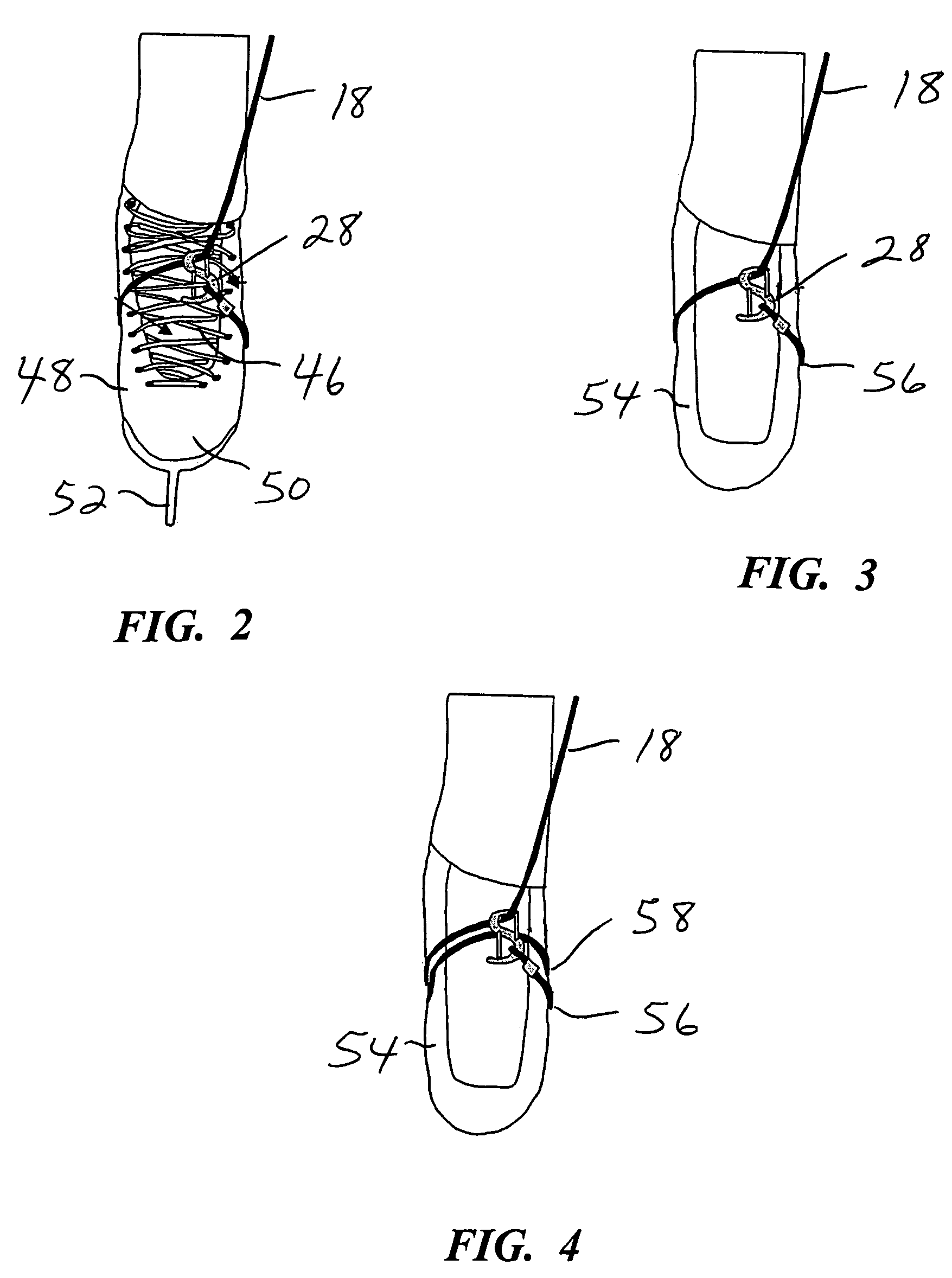Athletic training device
a training device and athletic technology, applied in the field of athletic training devices, can solve the problems of reducing the freedom of movement, requiring frequent and intensive time with the coach, and failing to provide an alignment or placement of a properly tensioned resilient cord, so as to achieve the effect of reducing the impact of freedom of movemen
- Summary
- Abstract
- Description
- Claims
- Application Information
AI Technical Summary
Benefits of technology
Problems solved by technology
Method used
Image
Examples
Embodiment Construction
[0036]Turning now to the drawings, there is shown in FIG. 1 an athletic training device 16 including a resilient cord or other element 18, preferably a bungee-type cord. Cord 18 is secured to itself at each end, with a fastener 20 to form a larger loop 22, and with a fastener 24 to form a smaller loop 26. Fasteners 20 and 24 preferably are metal sleeves that can be plastically deformed, i.e. squeezed together or crimped to secure the connection. As an alternative to sleeves, fasteners 20 and 24 can include D-rings, knots, sewn connections, or circular rings, preferably formed of metal but alternatively formed of plastic, wood, or ceramic material. Larger loop 22 is expandable to accommodate an athlete's hand therethrough, and in a relaxed (unstretched) state is sized to comfortably accommodate the wrist of the athlete. Smaller loop 26 connects the cord to a clipping mechanism 28. The clipping mechanism includes an S-shaped frame 30, and two spring-loaded closure members 32 and 34 pi...
PUM
 Login to View More
Login to View More Abstract
Description
Claims
Application Information
 Login to View More
Login to View More - R&D
- Intellectual Property
- Life Sciences
- Materials
- Tech Scout
- Unparalleled Data Quality
- Higher Quality Content
- 60% Fewer Hallucinations
Browse by: Latest US Patents, China's latest patents, Technical Efficacy Thesaurus, Application Domain, Technology Topic, Popular Technical Reports.
© 2025 PatSnap. All rights reserved.Legal|Privacy policy|Modern Slavery Act Transparency Statement|Sitemap|About US| Contact US: help@patsnap.com



